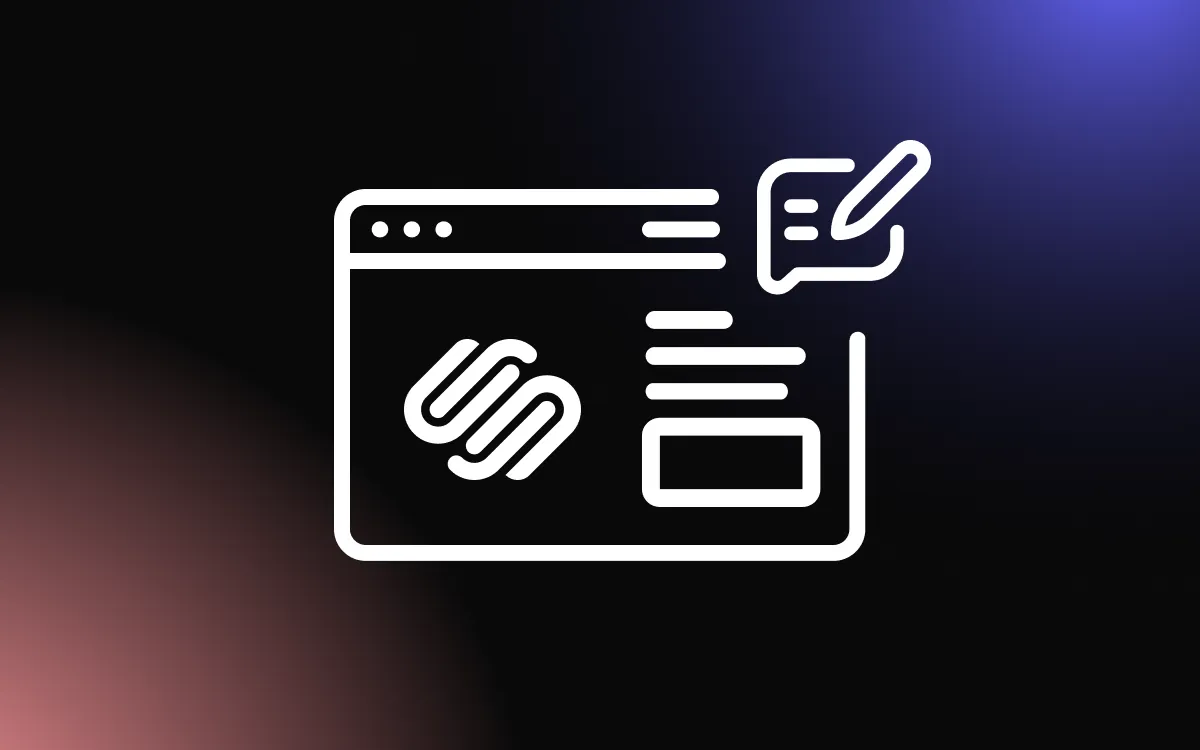
Nothing disrupts a well-designed blog like mismatched or poorly cropped images that throw off your layout and weaken your visual storytelling.
Without understanding the correct Squarespace image size, your blog may suffer from slow load times, distorted visuals, or inconsistent formatting. By following a few key guidelines, you can ensure every image fits seamlessly within your blog design and enhances your content’s impact.
This article will walk you through best practices for creating blog images that align perfectly with Squarespace layouts.
Why Getting the Right Squarespace Blog Image Size Matters
Choosing the correct Squarespace blog image size isn't just about aesthetics—it directly impacts loading speed, mobile responsiveness, and overall user experience.
For bloggers aiming to achieve optimal performance and design, understanding the best image size for Squarespace is essential. An image that’s too large can slow down your site, while one that’s too small may appear blurry or pixelated, reducing visual appeal.
When you use the ideal Squarespace image size, your blog looks polished and professional across all devices. High-resolution images optimized to fit your Squarespace blog image size recommendations help maintain consistency, whether readers are viewing posts on a desktop, tablet, or smartphone.
Additionally, properly sized images improve SEO. Fast-loading images enhance site speed, which search engines consider when ranking content. Compressing files without sacrificing quality ensures your blog remains both beautiful and functional.
Each Squarespace template may recommend different dimensions, but sticking with widths around 1500–2500 pixels typically works well for blog banners and featured images.
Ultimately, using the correct Squarespace image size ensures better performance, cleaner visuals, and a smoother reading experience. Incorporating image best practices not only supports your blog’s design but also contributes to its success in terms of engagement and visibility. Optimizing your Squarespace image size is a simple step that delivers powerful results.
Visual Consistency and Brand Presentation
Maintaining visual consistency across your blog is essential for a strong and cohesive brand identity, and choosing the correct Squarespace image size plays a major role in achieving that. Uniform image dimensions ensure that headers, thumbnails, and featured visuals align properly throughout your posts, giving your blog a clean, professional look.
Irregular or mismatched image sizes can disrupt the flow of your content and make your site appear unpolished. When each image fits seamlessly into your layout, readers are more likely to stay engaged and recognize your brand’s visual style.
By sticking to a consistent Squarespace image size, you also reinforce trust and recognition. Whether visitors are scrolling through a single post or exploring multiple entries, consistent formatting builds familiarity and supports your brand voice.
Investing in properly sized images is a simple yet powerful way to elevate your blog’s visual identity and leave a lasting impression on your audience.
How Image Sizes Affect Site Speed and SEO
Using the right Squarespace image size has a direct impact on your site’s speed and SEO performance. Oversized images can slow down page loading times, which not only frustrates users but also signals poor performance to search engines—ultimately hurting your rankings.
Search engines prioritize fast, mobile-friendly websites. When your images are properly resized and compressed without losing quality, your blog pages load faster, leading to a better user experience and higher SEO scores. A well-optimized Squarespace blog image size contributes to reduced bounce rates and longer visit durations, both of which positively influence search visibility.
Moreover, lighter image files free up bandwidth and improve performance across all devices, especially for users with slower connections. Squarespace templates often support responsive image display, but the original file size still matters.
Recommended Squarespace Image Size Guidelines for Blog Layouts
Selecting the correct Squarespace image size for your blog layout helps ensure visual consistency, optimal performance, and an engaging reading experience. Different types of images on your blog—like banner images, thumbnails, and in-post visuals—require specific dimensions to look their best across devices.
1. Blog Banner Images
For full-width banners at the top of blog posts, a recommended Squarespace image size is around 2500 pixels wide by 1500 pixels tall. This size offers high resolution while maintaining fast load times when compressed properly.
2. Thumbnail or Summary Images
Thumbnail images shown on blog index pages or in “related posts” sections usually display best at around 1500 x 1000 pixels. Keeping thumbnails consistent helps improve scanability and reinforces your blog’s visual rhythm.
3. In-Post Images
For images embedded within the body of your blog posts, use a Squarespace image size of 1000 to 1500 pixels wide. This ensures clear, crisp visuals without slowing down the page.
4. Mobile Considerations
All images should be responsive. Squarespace automatically adjusts images to fit smaller screens, but uploading overly large files can still impact performance. Start with the right dimensions and use compression tools to keep file sizes below 500KB whenever possible.
5. File Format and Optimization
JPEG is ideal for photos, while PNG works better for graphics with transparency. Use image compression tools like TinyPNG to maintain quality while improving load speed.
Sticking to these image size guidelines ensures that your blog remains fast, professional, and visually appealing. With consistent image dimensions and lightweight files, your content not only looks better—it performs better, too. Prioritizing the right image size is a key step in creating an optimized and successful blog.
6. Header, Thumbnail, and Body Image Dimensions
Choosing the right image size for different parts of your blog ensures your layout remains clean and visually balanced. Each image type—header, thumbnail, and in-post—has specific dimension recommendations to enhance appearance and performance.
1. Header Images: For full-width blog headers or banners, use an image size of 2500 x 1500 pixels. This provides high resolution and looks sharp on both desktops and large screens.
2. Thumbnail Images: Thumbnails that appear on blog landing pages or in grids work best at 1500 x 1000 pixels. Keeping thumbnails uniform makes your blog easier to scan and more cohesive overall.
3. Body Content Images: For images within the main content of your blog posts, aim for a width between 1000 and 1500 pixels. This ensures they’re large enough to be clear but won’t slow your site down.
Choosing Aspect Ratios for Different Templates
Selecting the right aspect ratios based on your template helps ensure your image size looks consistent and professional across your blog. Since each Squarespace template displays images differently, understanding how aspect ratios work can save time and avoid awkward cropping.
For banners and headers, a 16:9 aspect ratio (e.g., 2500 x 1406 pixels) is a safe, widescreen-friendly option used in many Squarespace templates. Thumbnails and summary block images typically look best with a 3:2 aspect ratio, such as 1500 x 1000 pixels.
In-post images offer the most flexibility, but staying close to 4:3 or 3:2 keeps visuals clean and aligned with text. Always preview images in both desktop and mobile modes to check for alignment issues or unexpected cropping.
How to Resize and Optimize Blog Images for Squarespace
Resizing and optimizing images is essential for maintaining a visually appealing blog that loads quickly and performs well. Using the right Squarespace image size ensures your content looks clean, remains responsive, and supports SEO efforts.
1. Determine the Correct Dimensions
Start by identifying the appropriate image size for your blog layout. Use 2500 x 1500 pixels for headers, 1500 x 1000 for thumbnails, and 1000–1500 pixels wide for in-post images. Choosing the right dimensions helps prevent automatic resizing that may distort or crop your visuals.
2. Use Online Tools to Resize
Before uploading, use tools like Canva, Photoshop, or Pixlr to adjust image dimensions to fit the ideal image size. This gives you control over cropping and aspect ratio.
3. Compress for Faster Load Times
Once resized, optimize the file using compression tools like TinyPNG or ImageOptim. This reduces file size without compromising quality, improving load speed and user experience.
4. Upload and Preview in Squarespace
After uploading your optimized image, preview it on both desktop and mobile to ensure it displays correctly within your template.
5. Tools for Resizing Without Losing Quality
To maintain clarity while adjusting your Squarespace image size, it’s important to use tools that resize images without degrading their quality. Free online tools like Canva, Pixlr, and Photopea allow you to set exact dimensions while preserving sharpness and resolution.
For more control, Adobe Photoshop offers high-quality resizing with advanced settings, ideal for bloggers who work with large visuals.
After resizing, use compression tools like TinyPNG or ImageOptim to reduce file size without affecting visual fidelity. These tools help you maintain a crisp, professional appearance while keeping your image size optimized for fast loading.
6. Ensuring Mobile-Friendly Display and Fast Load Time
Choosing the right image size is essential for mobile responsiveness and quick load times. Large, unoptimized images can slow down your site and disrupt layout on smaller screens, negatively impacting user experience and SEO.
To avoid this, stick to recommended dimensions (e.g., 1500–2500 pixels wide) and compress images using tools like TinyPNG. Squarespace automatically scales images for different devices, but starting with optimized sizes ensures better results.
Preview your blog posts on both desktop and mobile views to confirm alignment, clarity, and speed. Properly sized image size choices enhance usability across all devices.
Perfect Your Blog Layout with the Right Squarespace Image Size
Using the correct Squarespace image size for blog posts ensures your visuals look clean, consistent, and professional across all devices.
By following these guidelines, you’ll improve site aesthetics, boost reader engagement, and create a blog that’s as beautiful as it is informative. Start optimizing your blog images today to make every post stand out!

![How To Build a Squarespace Website — Full Guide [2024]](/_next/image?url=https%3A%2F%2Fwebsite-assets.commoninja.com%2Fdistribution%2F1737378505524_How_to_build_a_squarespace_website_2023.webp&w=640&q=75)
